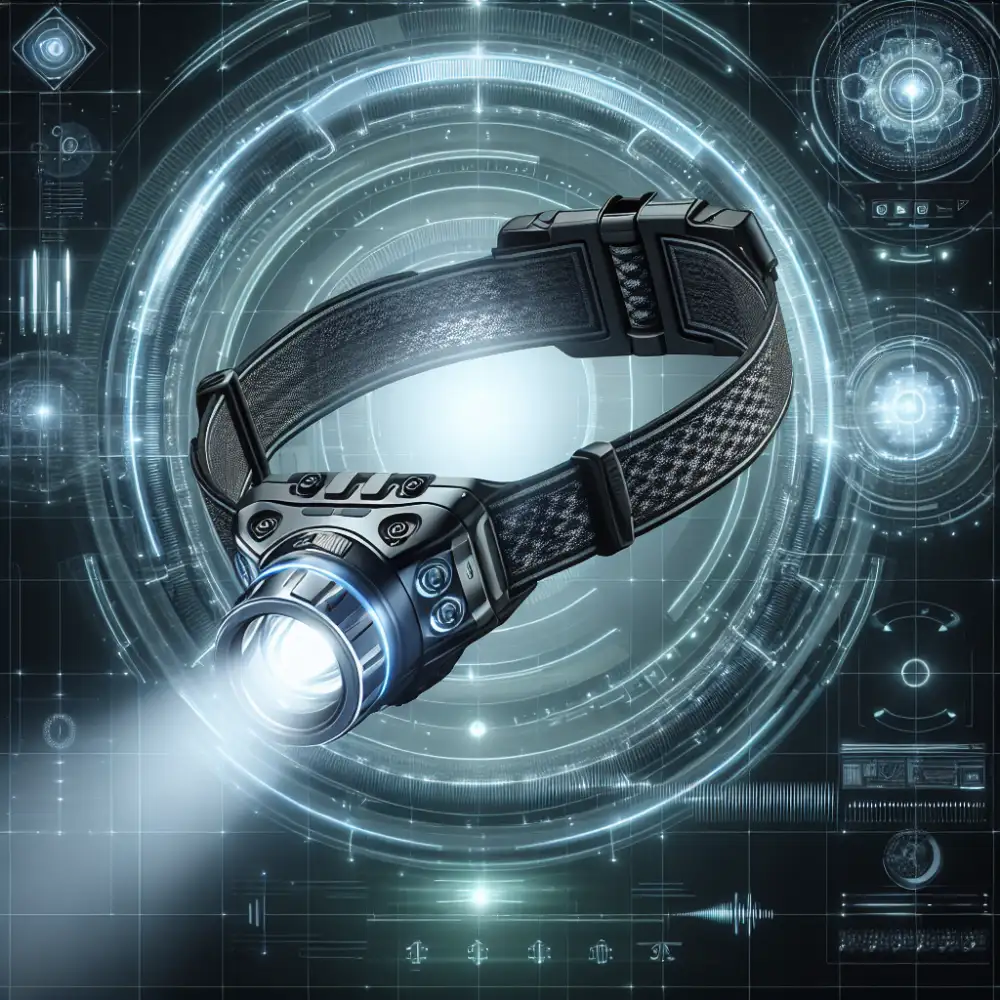Smart Headlamps Illuminate the Future of Lighting

Beam Adjustment Technology
Beam adjustment technology is a game-changer for smart headlamps and those with advanced features. It optimizes visibility and safety for drivers in a variety of driving conditions. Unlike traditional headlamps that project a fixed beam pattern, beam adjustment technology allows the headlamp to adapt the light distribution based on real-time factors. This ensures optimal illumination without blinding oncoming traffic.
One of the key components of this technology is a forward-facing camera. This camera detects the presence and distance of other vehicles on the road. It then relays this information to the headlamp control unit. The control unit then adjusts the beam pattern to prevent glare from reaching other drivers. This dynamic adjustment happens seamlessly as you drive, ensuring both your visibility and the safety of others.
But it's not just about other vehicles. Beam adjustment technology also considers your speed and driving environment. For instance, at higher speeds, the system can automatically widen and lengthen the beam throw. This provides greater visibility at a distance, crucial for safe highway driving. Similarly, when navigating curves, the headlamps can swivel or adjust their beam pattern to illuminate the road ahead more effectively.
Some advanced systems even incorporate GPS data and digital mapping. This allows the headlamps to anticipate upcoming bends, hills, and intersections. By pre-emptively adjusting the beam pattern, these smart headlamps provide drivers with a clear view of potential hazards before they become visible under traditional lighting.
The benefits of beam adjustment technology extend beyond safety. By optimizing the light distribution, these systems can also improve energy efficiency. By only illuminating the necessary areas, they reduce wasted light and potentially extend the lifespan of your headlamp bulbs.
As automotive technology continues to evolve, we can expect to see even more sophisticated beam adjustment features in the future. These advancements will further enhance driver safety, visibility, and the overall driving experience.
Battery Life and Charging
One of the most critical factors to consider in a headlamp, especially one packed with advanced features, is battery life. Nobody wants to be caught in the dark with a dead headlamp, especially during activities like nighttime hiking or camping.
Traditional headlamps often come with limited battery life, especially when using high-power settings. However, modern smart headlamps leverage efficient LED technology and intelligent power management systems to offer significantly longer runtimes.
Look for headlamps with multiple brightness levels and beam patterns. This allows you to conserve battery by using only the necessary amount of light for the task. Some advanced headlamps even feature adaptive brightness, where sensors automatically adjust the light output based on the surrounding ambient light, further optimizing battery usage.

Another crucial aspect is the charging method. Many smart headlamps now come equipped with built-in rechargeable batteries and utilize USB-C charging for convenience. This eliminates the need for disposable batteries, reducing waste and saving you money in the long run.
Consider the charging time as well. Some headlamps offer fast charging capabilities, allowing you to quickly top up the battery if needed. Additionally, certain models feature battery level indicators, providing a clear picture of the remaining charge so you are never caught off guard.
For extended adventures or emergencies, you might consider headlamps with additional features like external battery packs or the ability to run on standard AA batteries as a backup option. These features provide peace of mind, ensuring you always have a reliable light source.
The smart headlamp: a beacon in the darkness, illuminating not just the path ahead, but the potential of technology to enhance our every adventure.
Elias Thorne
Sensors and Reactive Lighting
Modern smart headlamps are going far beyond simple illumination, incorporating advanced sensors and reactive lighting systems to provide unparalleled safety and adaptability. These headlamps utilize an array of sensors to gather information about the surrounding environment and adjust the light beam accordingly.
One crucial sensor found in these headlamps is the ambient light sensor. This sensor detects the level of ambient light in the surroundings, allowing the headlamp to automatically adjust its brightness. In bright conditions, the headlamp dims to conserve battery life and avoid blinding oncoming drivers or pedestrians. Conversely, in low-light or dark environments, the headlamp increases its brightness to provide optimal visibility.
Another essential sensor is the proximity sensor. This sensor detects the presence of objects or obstacles in the headlamp's path. By measuring the distance to these objects, the headlamp can dynamically adjust the shape and direction of the light beam. For instance, if the headlamp detects an oncoming vehicle, it can automatically dim or deflect the light beam to avoid dazzling the other driver. This feature is particularly useful on winding roads or in traffic, where the risk of blinding other road users is higher.
Furthermore, some advanced headlamps incorporate accelerometer sensors. These sensors detect changes in speed and direction, allowing the headlamp to anticipate the user's movements. For example, when the headlamp senses the user turning their head, it can automatically swivel the light beam in the same direction, illuminating the intended path. This feature is especially beneficial when navigating corners or uneven terrain, as it ensures that the user's field of vision remains well-lit.

In addition to these individual sensors, some smart headlamps employ sensor fusion technology. This technology combines data from multiple sensors to create a more comprehensive understanding of the environment. By integrating data from ambient light sensors, proximity sensors, and accelerometers, the headlamp can make more informed decisions about how to adjust the light beam. This results in a more seamless and intuitive lighting experience for the user.
The integration of sensors and reactive lighting systems in smart headlamps represents a significant advancement in headlamp technology. By continuously monitoring the environment and adapting the light beam accordingly, these headlamps provide enhanced visibility, reduced glare, and improved safety for users and others on the road. As technology continues to evolve, we can expect to see even more sophisticated sensors and lighting systems incorporated into headlamps, further enhancing their capabilities and improving the overall driving experience.
Connectivity and App Integration
Durability and Weather ResistanceSmart headlamps and their advanced features are great, but how well do they hold up against the elements? Durability and weather resistance are crucial factors to consider, especially if you're an outdoor enthusiast. Look for headlamps with a robust build quality, using materials like high-grade plastics or aluminum for impact resistance.
Ingress Protection (IP) ratings indicate the level of protection against dust and water. A higher IP rating generally means better protection. For demanding outdoor activities, aim for a headlamp with at least an IPX4 rating, indicating resistance to water splashes from any direction. For more extreme conditions, like heavy rain or submersion, an IPX7 or IPX8 rating is ideal.
Remember, even with a high IP rating, it's essential to follow the manufacturer's guidelines for care and maintenance. Avoid exposing your headlamp to extreme temperatures or prolonged sunlight, as this can degrade materials over time.
Consider the design features that contribute to durability. A headlamp with a sealed battery compartment and O-rings provides better protection against water ingress. Look for models with a sturdy headband that can withstand repeated adjustments and won't easily break or lose elasticity.
By choosing a headlamp with excellent durability and weather resistance, you can be confident that your headlamp will withstand the rigors of your adventures, providing reliable illumination when you need it most.
Published: 22. 06. 2024
Category: Technology



